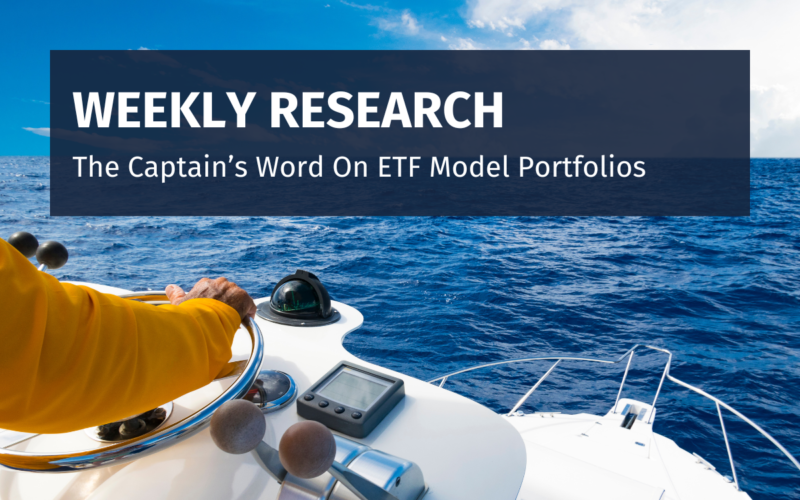While the Canadian ETF can be a lot like the U.S. ETF market, it’s very different in many ways. While the U.S. market is much larger, Canada has been able to introduce a number of products available to investors that face regulatory hurdles in the States. Michael Cooke is an experienced figure in the ETF space for the past 20 years and current board member of the Canadian ETF Association (CETFA), which aims to grow and protect the integrity of the Canadian ETF industry. He joins the ETF Think Tank to discuss the two North American markets and where innovation will take them next.
Why does Canada seem to have an easier time bringing products to market? Cooke recognizes that the U.S. ETF market is much larger, more mature, more liquid, and perhaps fostering more innovation. In contrast, je believes that Canada benefits from a regulatory environment that encourages innovation, whereas the SEC tends to be more deliberate. Canada’s early introduction of certain products was facilitated by regulatory, giving them a head start that the U.S. is working to catch up on.
Does that mean the U.S. is doing a better job of protecting investors? Cooke says that it’s not better or worse, it’s just different. He notes that Canada makes sure that there’s enough transparency for efficient trading and hedging. Canada has also proven that this undertaking is being approached prudently and has been serving investors well. The regulators are taking a bit of a different tactic, but it’s evolving over time.
Cooke explains that the most popular products in Canada are in the mutual fund structure and are built as complete portfolios. In the past, Canadian investors often had to go across the border to find various exposures for their portfolios. Today, however, the Canadian market has done a much better job of offering solutions at home. He says that if they can customize products that serve the needs of Canadian investors, it’s a good thing.
While the U.S. ETF market does enjoy certain tax advantages that Canada doesn’t, Cooke doesn’t think it’s a massive difference. ETFs in the United States are known for their tax efficiency and 95% of them have never had a capital gain distribution, an advantage that Canada doesn’t enjoy to the same extent. Well-managed products, however, should result in minimal distribution. Canada does have some advantages, such as cross-border withholding taxes, but as the market matures, advisors should have the ability to mitigate a significant portion of the associated risk.
The banking system in Canada operates quite differently. It is a relatively stable system, albeit with a somewhat oligopolistic structure, it’s secure. While Canada has the ‘Big 6’ banks, there are a lot of smaller players. The United States could be headed in a similar direction as Canada where there’s more concentration at the top. Despite ongoing debates about liquidity, stability, and efficiency, the Canadian system has proven itself time and again.
What’s the next big “first” in the industry? Cooke says that the concept of covered call strategies has resonated well with Canadian investors. There may come a point where a broader array of cryptos get placed into ETFs. Notably, there’s some interesting innovation happening in blockchain. He would like to see the market evolve to the point where we customize products that cater to a specific distribution channel, e.g., institutional vs. retail.
Other key takeaways:
- The CETFA organization operates as a simple, non-profit structure, drawing membership fees from legal firms, custodians, individuals, etc. It involves volunteer work that’s done on a part-time basis.
- Ten years ago, the top Canadian ETF issuer had 84% market share. Five years ago, there were 3 issuers that accounted for that same share. Today, it’s the top 7 issuers. The Canadian ETF industry is still in its infancy and will continue evolving. In Canada, you need to have boots on the ground and a local presence.
- Has anybody tried cross listing? Canadian issues have gone south of the border, although not with cross listing. There are some tax issues that could present risk. If you have a core competency, there’s no reason you couldn’t export it into the U.S. market.
- The approval of Bitcoin ETFs from Canadian regulators did not happen overnight. A lot of managers use futures to hedge risk and Canada determined this was adequate to address some risks. The Canadian regulators have taken a very prudent approach in their dealing with Crypto, recognizing their enduring presence.
- Canada offers money market ETFs that trade at a stable NAV. Implementing a similar structure in the U.S. might present challenges for the SEC, potentially requiring careful consideration.
You can watch a replay of this virtual happy hour on our YouTube channel here. While there, subscribe to our channel to stay up to date on our latest content.
Disclosure
All investments involve risk, including possible loss of principal.
The material provided here is for informational purposes only and should not be considered an individualized recommendation or personalized investment advice. The investment strategies mentioned here may not be suitable for everyone. Each investor needs to review an investment strategy for his or her own particular situation before making any investment decision.
All expressions of opinion are subject to change without notice in reaction to shifting market conditions. Data contained herein from third party providers is obtained from what are considered reliable sources. However, its accuracy, completeness or reliability cannot be guaranteed.
Examples provided are for illustrative purposes only and not intended to be reflective of results you can expect to achieve.
The value of investments and the income from them can go down as well as up and investors may not get back the amounts originally invested, and can be affected by changes in interest rates, in exchange rates, general market conditions, political, social and economic developments and other variable factors. Investment involves risks including but not limited to, possible delays in payments and loss of income or capital. Neither Toroso nor any of its affiliates guarantees any rate of return or the return of capital invested. This commentary material is available for informational purposes only and nothing herein constitutes an offer to sell or a solicitation of an offer to buy any security and nothing herein should be construed as such. All investment strategies and investments involve risk of loss, including the possible loss of all amounts invested, and nothing herein should be construed as a guarantee of any specific outcome or profit. While we have gathered the information presented herein from sources that we believe to be reliable, we cannot guarantee the accuracy or completeness of the information presented and the information presented should not be relied upon as such. Any opinions expressed herein are our opinions and are current only as of the date of distribution, and are subject to change without notice. We disclaim any obligation to provide revised opinions in the event of changed circumstances.
The information in this material is confidential and proprietary and may not be used other than by the intended user. Neither Toroso or its affiliates or any of their officers or employees of Toroso accepts any liability whatsoever for any loss arising from any use of this material or its contents. This material may not be reproduced, distributed or published without prior written permission from Toroso. Distribution of this material may be restricted in certain jurisdictions. Any persons coming into possession of this material should seek advice for details of and observe such restrictions (if any).











